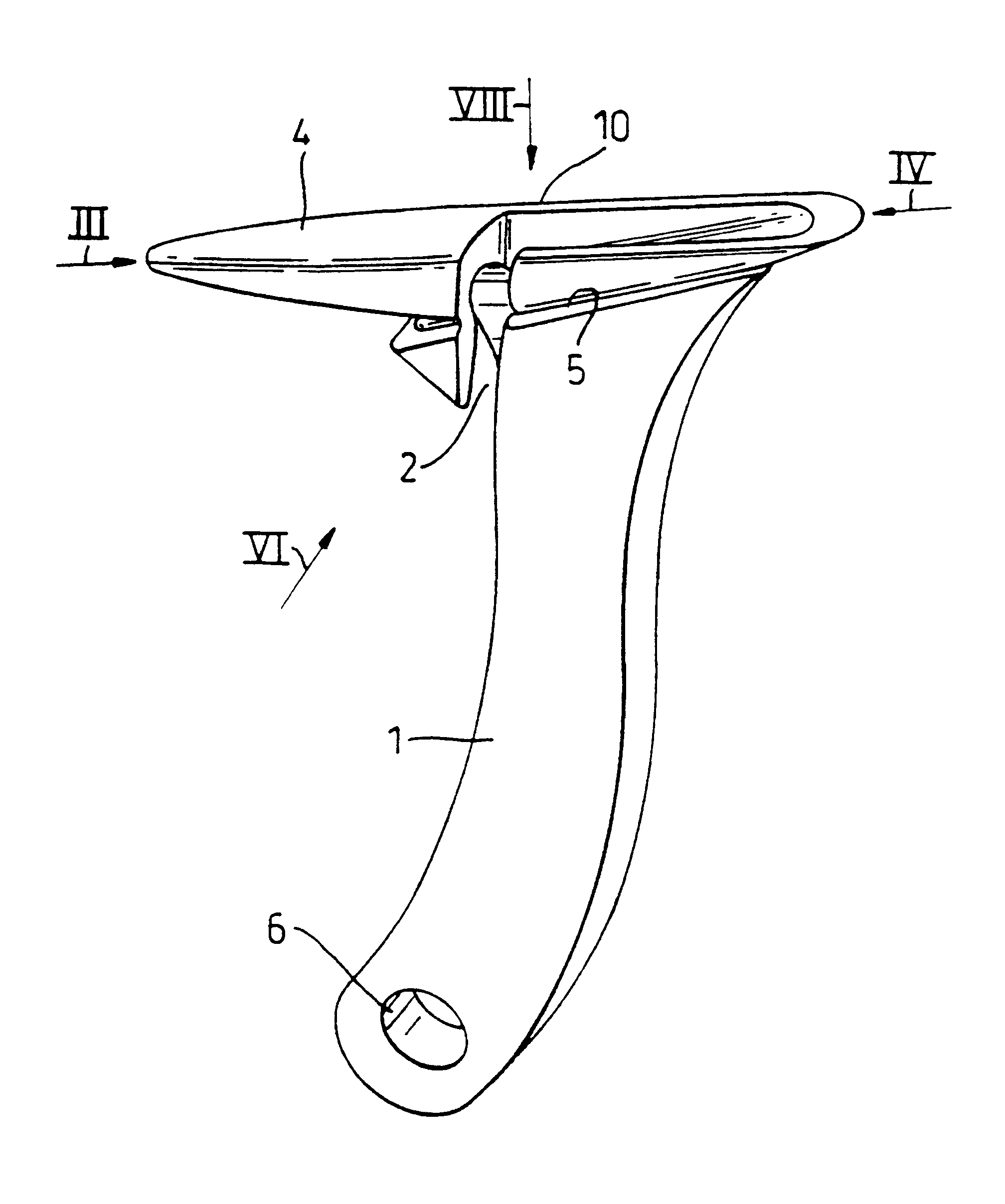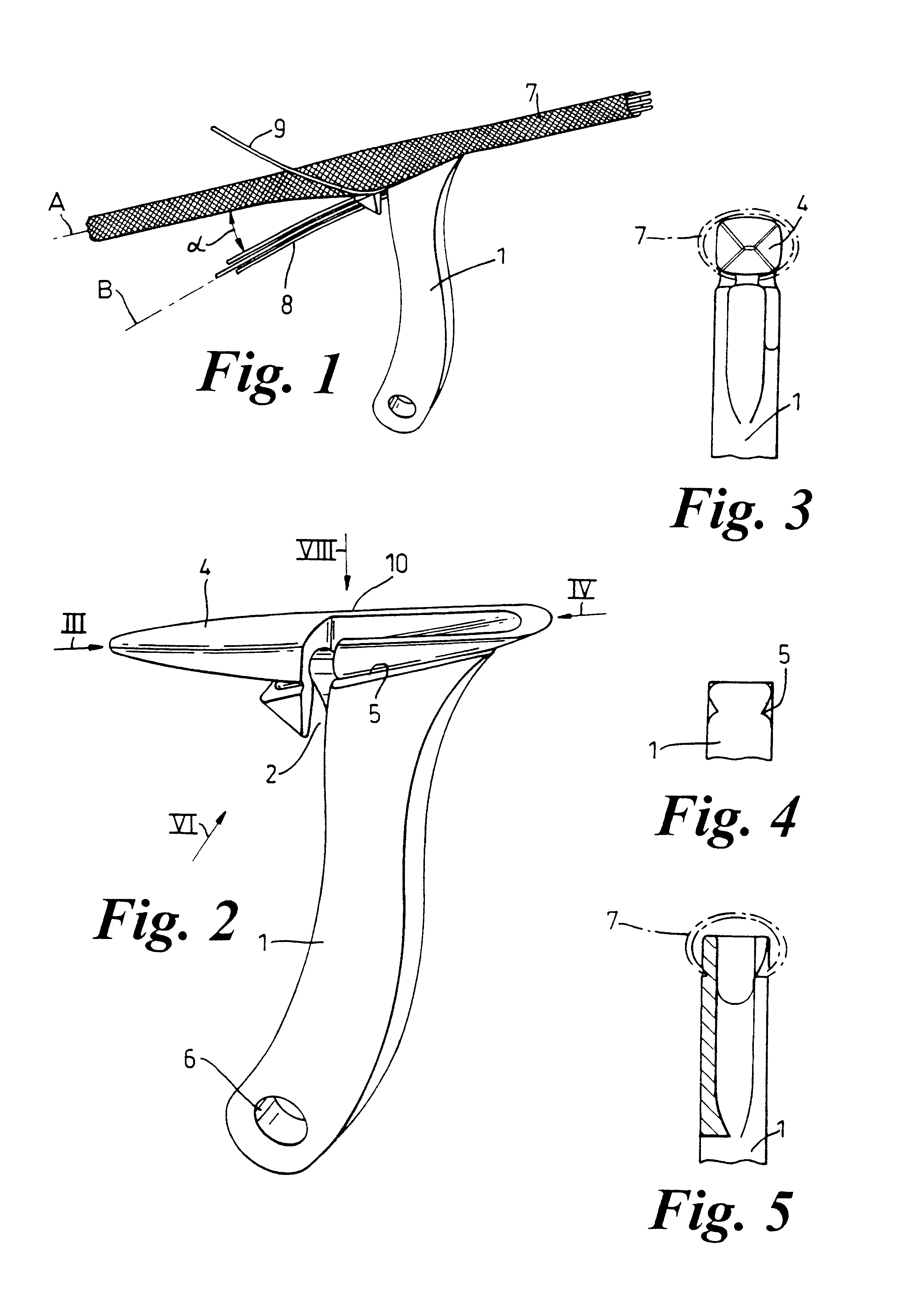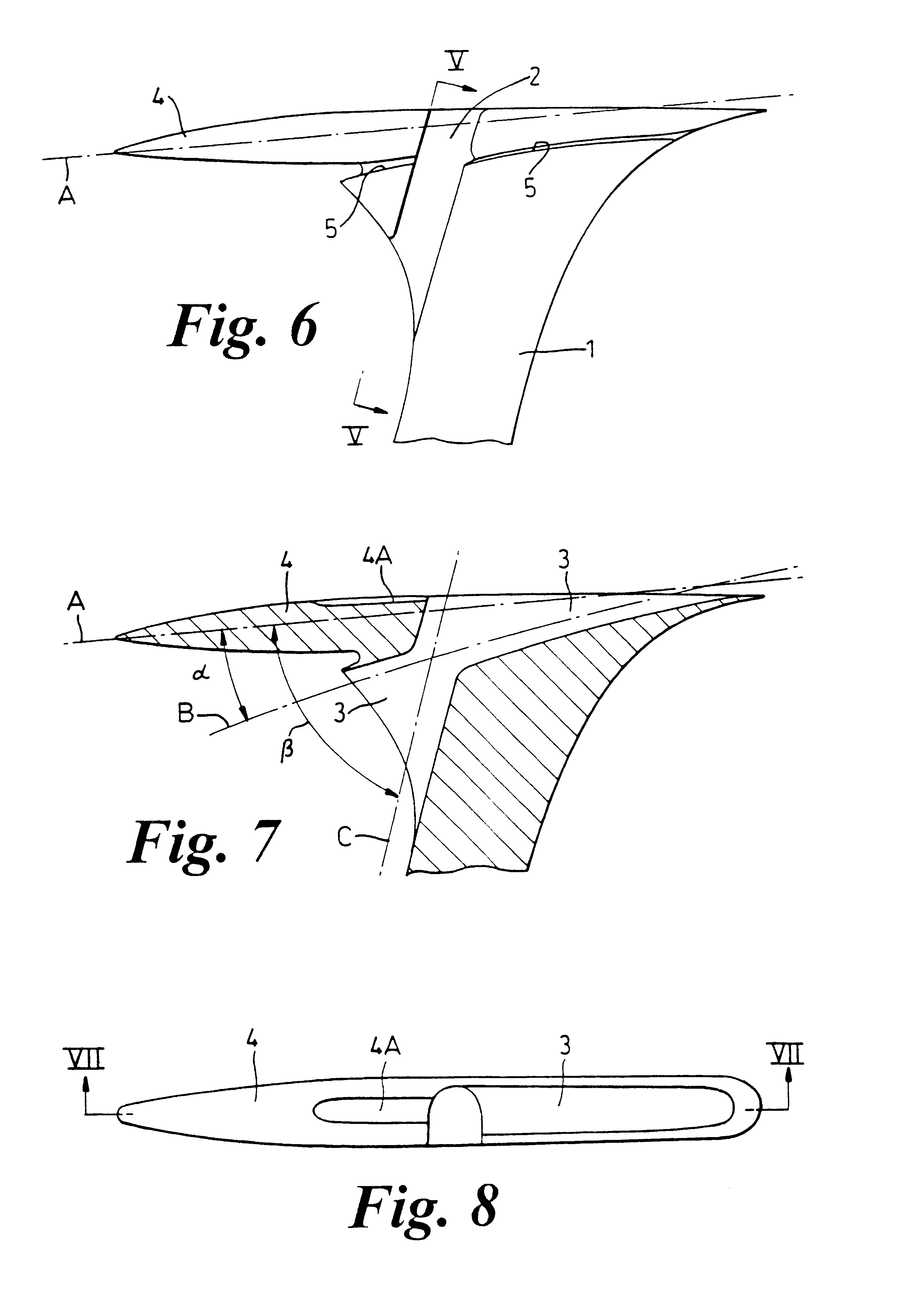Tool and method for sheathing of cables
- Summary
- Abstract
- Description
- Claims
- Application Information
AI Technical Summary
Benefits of technology
Problems solved by technology
Method used
Image
Examples
Embodiment Construction
As shown by FIG. 1, the device during use only has one gripping handle 1, by which the user communicates movement forward relative to the tool with regard to a bundle of cables 8, 9 in order to position them on the inside of a sheath 7. For the rest of this description, the terms `in front of the tool` and `behind the tool` will be used with reference to the relative direction of movement with regard to the sheath which is to be put on. As illustrated in FIG. 1, the angle .alpha., formed between and an Axis A of the head of the tool, and the main direction of movement of the sheath on axis B for passage of the bundle of cables, is relatively small, of the order of 20.degree..
In more detail, as seen in FIG. 2, the device comprises two components which are the gripping handle 1 and sheath head 10. For a high degree of robustness, the device is preferably made in only one part, for example from aluminium, by methods known to the expert. It can be made by starting-from a block of alumin...
PUM
| Property | Measurement | Unit |
|---|---|---|
| Angle | aaaaa | aaaaa |
| Length | aaaaa | aaaaa |
| Stiffness | aaaaa | aaaaa |
Abstract
Description
Claims
Application Information
 Login to View More
Login to View More - R&D
- Intellectual Property
- Life Sciences
- Materials
- Tech Scout
- Unparalleled Data Quality
- Higher Quality Content
- 60% Fewer Hallucinations
Browse by: Latest US Patents, China's latest patents, Technical Efficacy Thesaurus, Application Domain, Technology Topic, Popular Technical Reports.
© 2025 PatSnap. All rights reserved.Legal|Privacy policy|Modern Slavery Act Transparency Statement|Sitemap|About US| Contact US: help@patsnap.com



